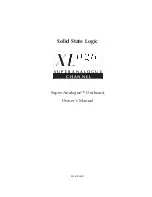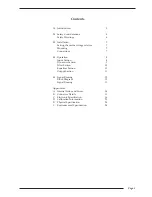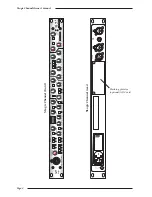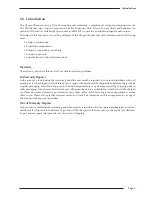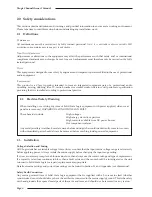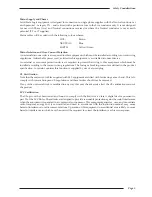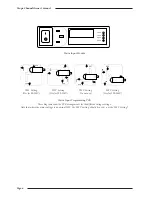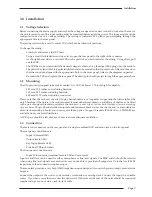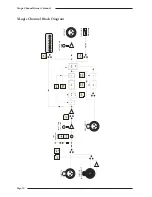
4.4
Expander/Gate
This section can act as a
∞
:1 Gate or as a 2:1 Expander when the
EXP
switch is pressed.
RANGE
– Determines the depth of gating or expansion. When turned fully anticlockwise (Range = 0), this
section is inactive. When turned fully clockwise, a range of 40dB can be obtained.
THRESHOLD
– Variable hysteresis is incorporated in the threshold circuitry. For any given ‘open’ setting,
the Expander/Gate will have a lower ‘close’ threshold. The hysteresis value is increased as the threshold
is lowered. This is very useful in music recording as it allows instruments to decay below the open
threshold before gating or expansion takes place.
RELEASE
– This determines the time constant (speed), variable from 0.1- 4 seconds, at which the
Gate/Expander reduces the signal level once it has passed below the threshold. Note that this control
interacts with the Range control.
FAST ATT –
Provides a fast attack time (100µs per 40db). When off, a controlled linear attack time of 1.5ms
per 40dB is selected. The attack time is the time taken for the Expander/Gate to ‘recover’ once the signal
level is above the threshold. When gating signals with a steep rising edge, such as drums, a slow attack
may effectively mask the initial ‘THWACK’, so you should be aware of this when selecting the appropriate
attack time.
HOLD
– Determines the time after the signal has decayed below the threshold before the gate closes.
Variable from 0 to 4 seconds.
The green LEDs in the display section indicate Expander/Gate activity (the amount of gain reduction).
Note that when the Dynamics section is not in circuit, its sidechain input is also bypassed.
4.5
Filters Section
This section comprises a four–band parametric equaliser plus high and low pass filters. The EQ and filters
can be routed separately to different audio paths within the module.
Routing Buttons
There are four routing buttons associated with this section of the
module. Section 5 describes the routing combinations in more detail
but, briefly, these buttons function as described below.
LPF IN, HPF IN
– Switches the Lo and Hi pass filter section into
circuit. If no other buttons are pressed, the Filters are post the
Equaliser.
DYN SC
– The Filters are switched into the sidechain of the Dynamics
section. The Equaliser can be switched into the sidechain
independently. Note that DYN SC overrides the INPUT function (see
below).
INPUT
– Moves the Filters to put them in circuit immediately post the Channel Input section.
This allows the Filters to be used to clean up signals before compressing them. Selecting Dynamics ‘PRE
EQ’ will allow the compressed signal to be EQ’d.
The Filter section is completely bypassed when both Filter IN switches are not selected.
XLogic Channel Owner’s Manual
Page 10
DYN
S/C
INPUT
LPF
IN
FILTERS
35
3
KHz
25
9
4
15
30
Hz
500
20
60
100
300
HPF
IN
RELEASE
4
EXP
HOLD
0
THRESHOLD
+10
0
3
0
COMPRESSOR
+10
1
20
14
10
6
3
RELEASE
1
4
0
-20
RATIO
1
∞
DYN
IN
KEY
LINK
PRE
EQ
PK
FAST
ATT
DYNAMICS
FAST
ATT
GATE
RANGE
0
40
THRESHOLD
4
Summary of Contents for XLogic Super Analogue
Page 1: ...Super Analogue Channel Owner s Manual ...
Page 2: ......
Page 29: ...Notes Appendix Page 25 ...


